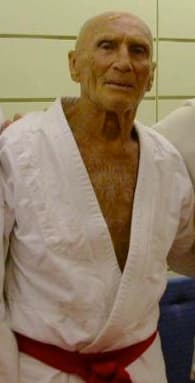


Brazilian Jiu-jitsu
Brazilian Jiu-jitsu (BJJ) is a martial art and combat sport centered on ground fighting, positional control, and submission holds, cultivating highly engaged communities worldwide through academies, competition circuits, and distinct belt-ranking systems.
Statistics
Summary
Lineage Reverence
Identity MarkersMat Rituals
Social NormsRolling Hierarchy
Community DynamicsGi-No Gi Divide
Polarization FactorsAcademy Members
Practitioners who train regularly at specific gyms or academies, forming tight-knit local communities.
Competitors
Athletes focused on competition circuits, including local, national, and international tournaments.
Instructors & Coaches
Black belts and advanced practitioners who lead classes, seminars, and workshops.
Online Learners
Individuals who supplement their training with online resources, tutorials, and discussion forums.
Event Organizers & Fans
People involved in organizing, spectating, or supporting BJJ events and competitions.
Statistics and Demographics
BJJ is fundamentally practiced in gyms and academies, which are the primary hubs for training, community building, and belt progression.
Workshops, seminars, and classes are essential for skill development and community engagement beyond regular training.
Major BJJ tournaments, expos, and competition circuits serve as large-scale gatherings for practitioners and fans.
Insider Knowledge
"The Kimura always wins"
"Don’t be a tapper"
„Tap out“
„Rolling“
„Guard is the position“
„No-gi or gi?“
Respect the instructor’s lineage and traditions.
Always bow or show respect when entering and leaving the mats.
Never roll with someone much more advanced without permission.
Clean gi and hygiene are mandatory.
Lucas, 28
Fitness coachmaleLucas has trained in Brazilian Jiu-jitsu since his early twenties and is a blue belt teaching fundamentals alongside his personal training work.
Motivations
- Improving technique to advance belt rank
- Sharing knowledge with newcomers
- Staying physically fit and disciplined
Challenges
- Balancing coaching and personal training time
- Avoiding injury during sparring
- Managing progression plateaus
Platforms
Insights & Background
First Steps & Resources
Research BJJ Fundamentals
Visit a Local BJJ Academy
Acquire Essential Training Gear
Research BJJ Fundamentals
Visit a Local BJJ Academy
Acquire Essential Training Gear
Learn Basic Movements and Drills
Join Beginner-Focused Open Mats
„Welcoming new members with a group roll“
„Formal belt ceremony“
Not tapping early enough during sparring.
Skipping basics to learn flashy moves.
Facts
North American BJJ communities often blend sport competition focus with MMA cross-training, emphasizing physical conditioning.
European academies highlight systematic instruction and traditional gi training, often with strong lineage certifications.
Asian BJJ scenes are rapidly growing with a strong emphasis on competition and blending local martial arts influences.























